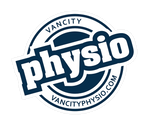Have you recently felt a sharp pain in your inner thigh or groin area after moving too quickly or awkwardly? You might be dealing with a groin strain a common soft tissue injury that can affect anyone, from weekend warriors to busy parents chasing after kids.
At Vancity Physio, we see groin strains often and know just how frustrating they can be. The good news? With the right care and a few guided exercises, you can recover fully and get back to your everyday activities without pain.
Let’s break it down.
What Is a Groin Strain?
A groin strain happens when the muscles on the inside of your thigh called the adductors get overstretched or torn. These muscles help bring your legs together and support movement during walking, running, and side-to-side activities.
Common Causes:
-
Sudden movements (like sprinting, jumping, or lunging)
-
Slipping or falling
-
Lifting something awkwardly
-
Sports like hockey, soccer, or tennis
Symptoms to Watch For:
You might have a groin strain if you notice
-
A sharp or pulling pain in your groin or inner thigh
-
Swelling or bruising in the area
-
Pain when moving your leg in certain directions
-
Trouble walking or standing for long
If any of these sound familiar, it's worth getting assessed especially if the pain sticks around for more than a few days.
How Serious Is It?
Groin strains can range from mild to more severe:
-
Mild (Grade 1): A small stretch or minor tear. A bit sore, but you can usually keep moving.
-
Moderate (Grade 2): More painful, with swelling and limited movement.
-
Severe (Grade 3): A full tear — often needing more time to heal and possibly hands-on treatment.
How to Recover from a Groin Strain
Step 1: Rest & Early Care
-
Take a break from activities that cause pain.
-
Apply ice for 15–20 minutes, a few times a day.
-
Use compression if there’s swelling.
Step 2: Gentle Movement & Stretching
As the pain settles, you can start some gentle mobility exercises to prevent stiffness.
Step 3: Strengthening Exercises
Targeted exercises help rebuild strength and prevent the injury from coming back.
Safe & Simple Exercises to Start With
Here are a few physio approved exercises to help your groin heal. Only do these if your pain is mild or improving and stop if anything feels sharp or “off.”
1. Adductor Squeeze (Isometric Hold)
How to do it:
-
Lie on your back, knees bent.
-
Place a soft ball or rolled-up towel between your knees.
-
Gently squeeze for 5–10 seconds. Rest.
Repeat 10 times.
This gently reactivates your inner thigh muscles.
2. Leg Slides
How to do it:
-
Lie on your back with legs straight.
-
Slowly slide one leg out to the side, then back to center.
-
Keep your movement smooth and pain-free.
Do 10 slides per leg.
3. Side-Lying Leg Lifts
How to do it:
-
Lie on your side with your top leg bent and foot flat in front.
-
Lift your bottom leg slowly off the floor, then lower.
Repeat 10–15 times per side.
This helps strengthen the adductor muscles safely.
4. Standing Side Lunges (Later On)
Once you feel stronger:
-
Stand tall, step out to the side, and bend that knee while keeping the other leg straight.
-
Push back to the center.
Do 8–10 lunges per side.
This builds strength and control for everyday movement.
When to See a Physio
If your pain isn’t improving after a week, or you're unsure which exercises are safe for you, don’t guess. Our team at Vancity Physio can help you:
-
Figure out exactly what’s going on
-
Build a personalized recovery plan
-
Treat the issue with hands-on therapy and exercise
We work with all ages and activity levels no referral needed.
You Don’t Have to Push Through Pain
Groin strains can slow you down, but they don’t have to keep you down. With proper care and the right exercises, most people recover well and feel even stronger after.
If you're dealing with a groin strain or another muscle injury, book an appointment with us at Vancity Physio. We’re here to help you move better, feel better, and get back to the activities you love.
Ready to Start Your Recovery?
📞 Call us or 📅 Book online to schedule your assessment with one of our experienced physiotherapists.


